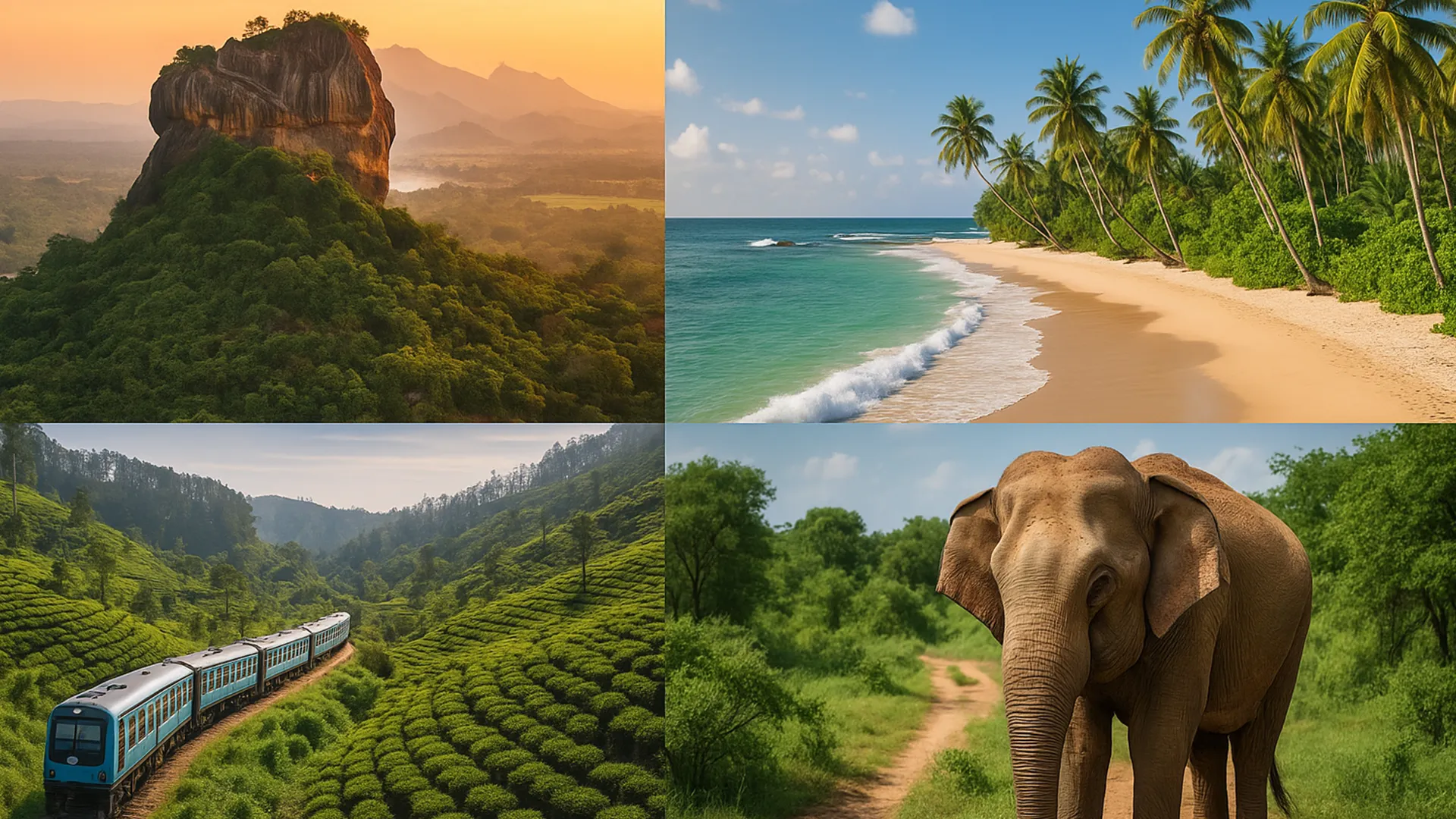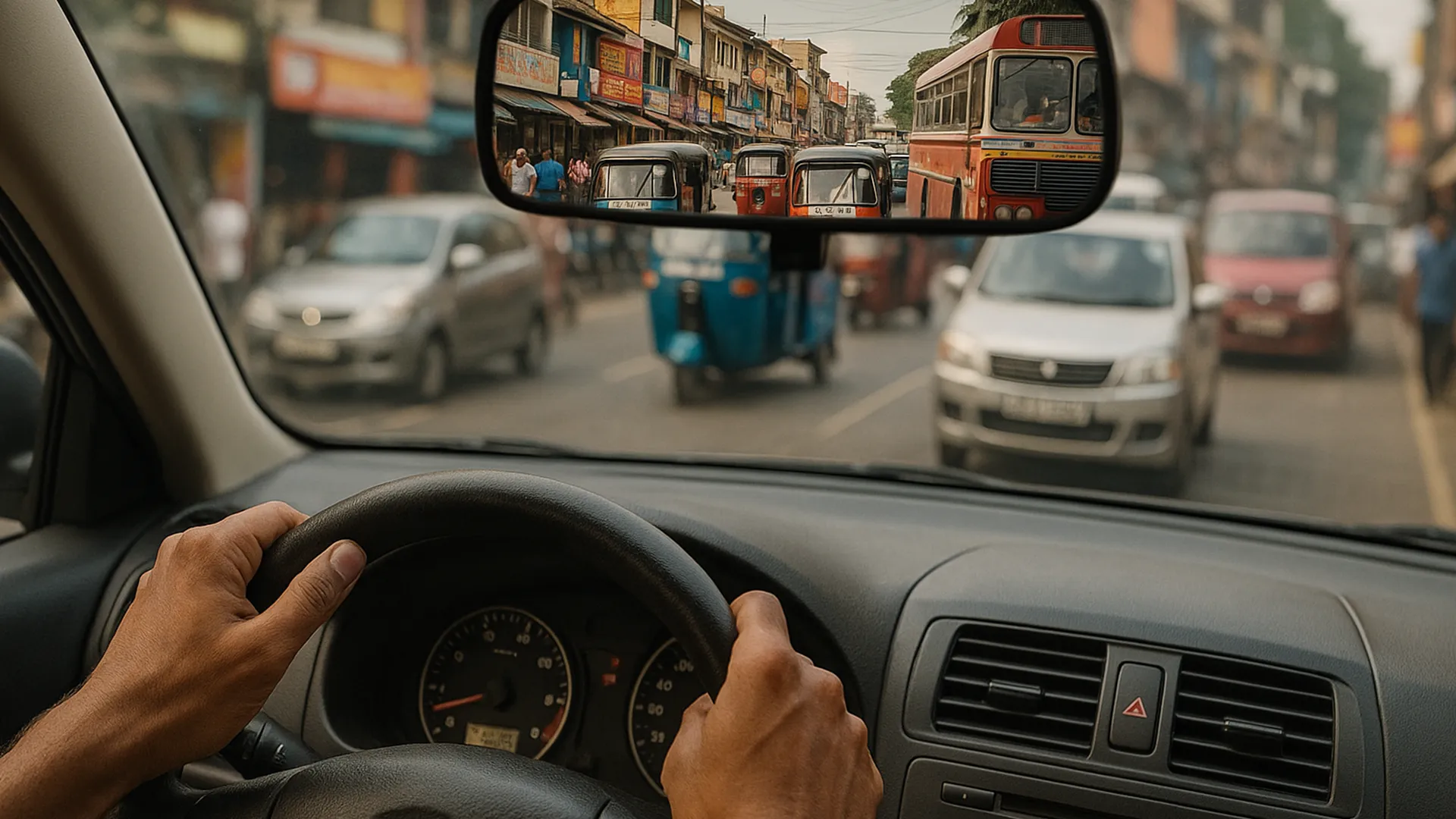
Sri Lanka seems to exist in a thousand different worlds at once. One day you’re sweltering on a sun-drenched beach, the next you’re reaching for a jacket in the misty highlands. You can be exploring the ruins of an ancient civilization in the morning and watching blue whales in the afternoon. This incredible diversity is its greatest attraction, but it can also be a puzzle for first-time visitors. Understanding the island’s rhythmic cycles - of weather, culture, and geography - is the key to crafting a seamless and deeply rewarding journey.
The most decisive factor in planning your trip is the monsoon. Unlike a single rainy season, Sri Lanka has two, blessing it with a year-round tropical climate but dictating which coast is sunny when. From roughly May to September, the southwest monsoon brings rain to the west and south coasts (e.g., Colombo, Galle, Hikkaduwa, Mirissa) while the east coast (Trincomalee, Arugam Bay) enjoys its dry, sunny season. This pattern flips from October to April, when the northeast monsoon dampens the east, and the west and south coast bask in glorious sunshine. The hill country and cultural triangle can be visited year-round, though afternoon showers are common. The secret is not to fear the monsoon. The rains often come in short, intense bursts, followed by brilliant sunshine. The landscape is at its most lush and vibrant, the crowds are thinner, and the air is clean and fresh.
This climatic split makes Sri Lanka a fantastic destination for a two-centre holiday. A perfect two-week itinerary for a first-time visitor, planned around the weather, could begin with the cultural highlights. Fly into Colombo and immediately head to the Cultural Triangle. Spend three or four days exploring the awe-inspiring ancient cities of Anuradhapura and Polonnaruwa, the rock fortress of Sigiriya, and the cave temples of Dambulla. This is where you’ll delve deep into Sri Lanka’s 2,500-year-old Buddhist history. From there, take one of the world’s most scenic train rides into the Hill Country. The journey from Kandy to Ella is an attraction in itself, chugging through tea plantations, past waterfalls, and through misty mountains. Spend a few days in Ella hiking Little Adam’s Peak and Ella Rock, touring a tea factory, and enjoying the cooler climate.
Then, descend from the hills to the coast. Depending on the season, you’ll choose your beach destination. If it’s the dry season on the south coast, head to Mirissa or Unawatuna for whale watching, surfing lessons, and pure relaxation on golden sands. If it’s the East Coast’s time to shine, make the journey to Arugam Bay for a more laid-back, rustic vibe and world-class surfing. This balance gives you the perfect mix of activity and relaxation, culture and nature, all within a compact island.
Weaving through all of this is the warmth of the Sri Lankan people. The culture is a beautiful tapestry of different ethnicities and religions - Sinhalese, Tamil, Muslim, and Burgher - living together. You’ll see Buddhist temples, Hindu kovils, Islamic mosques, and Christian churches, often in proximity. This diversity is reflected in the incredible food, from fiery Sinhalese curries to hearty Tamil meals and delicious Muslim short eats. As a visitor, you are greeted with a genuine, open-hearted hospitality that is rare in the world. A smile is always returned. Don’t be surprised if you’re invited to a local home for tea or offered help without even asking for it.
The rhythm of Sri Lanka is one of beautiful contrasts. It’s the frantic energy of a Colombo market and the profound peace of an ancient temple. It’s the cool silence of the highlands and the powerful roar of the ocean. It’s the spice-infused aroma of a curry and the simple sweetness of a tropical fruit. To navigate it is to embrace this variety. Pack for every occasion, plan around the sun and rain, move between the sacred and the scenic, and most importantly, leave room in your itinerary for the unexpected moments of connection that will truly define your journey. Sri Lanka doesn’t just show you its sights; it invites you into its rhythm, and once you find it, it’s a rhythm you’ll carry with you long after you’ve left its shores.
Powered by Froala Editor
Related Insights & Articles

September 18th 2025
Traveling with Tribe: A Family Guide to Sri Lankan Hotels & Resorts
Sri Lanka, with its compact size, friendly locals, and incredible variety of activities, is a secret superhero of family travel. It’s a country where a child’s imagination can run wild, picturing elephants on safari, exploring ancient fortress ruins, and splashing in warm ocean waves. But the success of any family holiday often hinges on one crucial element: the home base. Choosing the right hotel or resort can transform a good trip into an unforgettable one, for both parents and kids alike.
The first and most important decision is location. For families with younger children, the calmer, shallow waters of the southwest coast, like those in Bentota, Kalutara, or Wadduwa, are ideal. These beaches provide a safe environment for paddling and building sandcastles, and the resorts here are well-versed in catering to families. For those with older, more adventurous kids, the cultural triangle (Sigiriya, Dambulla, Polonnaruwa) offers a thrilling immersion into history and wildlife. Wandering through ancient kingdoms and going on safari to see elephants, leopards, and sloth bears is like stepping into a living history and geography book. The hill country, with its train rides through tea plantations and cooler climate, offers a completely different, but equally enchanting, experience.
Once you’ve chosen your region, the room configuration is your next priority. The classic hotel room with two double beds often works, but for more space and privacy, seeking out family suites or interconnected rooms is a game-changer. This allows parents to have their own space after the kids are asleep, creating a semblance of a normal evening. For larger families or those seeking a truly special experience, private villas are a magnificent option. Many villas come with their own small private pool, a living area, and often, the invaluable services of a cook and butler. This allows for flexible meal times, the ability to prepare familiar snacks for fussy eaters, and a contained, safe environment for children to play.
The amenities within the hotel grounds are what truly define a family-friendly stay. A swimming pool is non-negotiable. After a day of sightseeing in the heat, a pool is the ultimate reward for kids and a place for them to burn off excess energy. Look for resorts with dedicated children’s pools or shallow areas. A kids’ club can be a welcome respite for parents, offering supervised activities like mask painting, coconut leaf weaving, or Sri Lankan drum lessons, giving children a fun cultural experience while adults enjoy a quiet meal or a spa treatment. Evenings can be magical, with many hotels organizing family-friendly events like movie nights under the stars or bonfires on the beach.
The adventure doesn’t stop at the hotel gate. Sri Lanka is packed with activities that captivate all ages. A safari in Udawalawe or Yala National Park is an absolute highlight, a real-life jungle book experience. Visiting the Pinnawala Elephant Orphanage, where you can watch dozens of elephants bathe in the river, is a sight that will stay with children forever. For a dose of culture, the ancient rock fortress of Sigiriya is a thrilling climb for older kids (with plenty of stops along the way), while the Dambulla Cave Temples, with their myriad Buddha statues, inspire awe. The key is to balance activity with downtime, ensuring everyone has enough energy and isn’t overwhelmed.
Practicalities are paramount. When booking, don’t hesitate to ask the hotel specific questions. Can they provide baby cots? Do they have high chairs in the restaurant? Is it possible to arrange for a babysitter? Sri Lankan people have a natural affinity for children, and staff are typically incredibly helpful and accommodating. Preparing a small first-aid kit with plasters, antiseptics, and stomach upset remedies is always wise. Finally, embrace the flexibility that a family trip requires. Some of the best memories will be unplanned: stopping for a fresh pineapple from a roadside stall, playing a game of cricket with local kids on the beach, or simply enjoying the slow, shared rhythm of a day together in a beautiful new place. Sri Lanka’s warmth extends beyond its climate, making it the perfect place to create those cherished family travel stories.
Powered by Froala Editor

September 18th 2025
Behind the Wheel: Navigating the Rules, Rituals, and Realities of Driving in Sri Lanka
The decision to self-drive in a foreign country is a bold one, filled with visions of freedom but also tinged with apprehension. In Sri Lanka, both the dream and the challenge are very real. Driving here is a vibrant, chaotic, and uniquely organized ballet that operates on its own set of rules. Understanding these unwritten codes and practical realities is the key to transforming a potentially stressful experience into a confident and enjoyable adventure.
The formalities come first. To drive legally in Sri Lanka, you must have an International Driving Permit (IDP) alongside your valid driver's license from your home country. Car rental companies will require both. It is absolutely non-negotiable, and your insurance is void without it. When you pick up your vehicle, inspect it thoroughly. Note every single scratch, dent, and imperfection on the rental agreement before you drive away. Check the tire tread, the spare tire, and that all lights and indicators work. Take photos and videos of the car’s condition from every angle. This protects you from any unfair claims upon return.
Now, for the driving itself. The number one rule: drive on the left. It sounds simple, but after a lifetime of driving on the right, it requires constant, conscious effort. A good trick is to put a small sticker on the top-left corner of your windshield as a reminder. The second most important piece of advice is to be exceptionally cautious when pulling out into traffic or at junctions. Right of way is often determined by size and assertiveness, not by road signs. The largest vehicle usually has the right of way. Expect the unexpected at all times. The road is a shared space for cars, buses, trucks, tuk-tuks, motorcycles, bicycles, pedestrians, dogs, cows, and occasionally monkeys. Watch for hand signals from tuk-tuk and motorcycle drivers - a waving left hand often means it’s okay to overtake them.
The rhythm of the road is set by the public buses. They are the kings of the asphalt, often driving assertively and overtaking on blind corners. The universal language for “I’m coming through” is a quick flash of the headlights. If you see this coming from behind, especially from a bus or truck, it’s best to gently slow down and move left to let them pass. Similarly, if you are overtaking, a quick toot of the horn is a common way to alert the driver in front. This is not considered rude; it’s a necessary safety communication.
Outside of the main cities, driving becomes a more pleasant experience. The roads winding through the hill country towards Ella or Nuwara Eliya are spectacularly beautiful, but also narrow and winding. Take your time, use your horn on blind corners, and pull over to let faster local vehicles pass. Within Colombo, driving is an advanced-level skill. The traffic is dense and unpredictable. Many visitors choose to pick up their rental car after they leave the city, using taxis or Uber (which operates here) to navigate the capital.
Finally, embrace the journey. Allow extra time for every trip. What looks like a 100-kilometer journey on a map might take three or four hours due to the winding roads, traffic, and inevitable stops for photos, tea, or to let a herd of cows pass. Have a reliable offline map downloaded (Google Maps or Maps.me), carry cash for toll roads and parking, and always keep a bottle of water and your sense of humor handy. Driving in Sri Lanka is not a task to be endured; it’s an activity to be experienced. It will make you a more alert, patient, and adaptable driver. And the stories you’ll tell about navigating a mountain road with a bus on one side and a 1000-foot drop on the other will be among the best souvenirs you bring home.
Powered by Froala Editor

September 18th 2025
Soul, Surf, and Asana: Why Sri Lanka is the Premier Surf and Yoga Destination
The connection is innate, a symbiotic relationship between two practices that seem, on the surface, to be very different. One is a dynamic dance with the raw power of nature; the other is a still, internal journey of breath and body. Yet, surfing and yoga are two sides of the same coin, both requiring core strength, balance, flexibility, and, most importantly, a focused, present mind. Nowhere is this connection celebrated more holistically than in Sri Lanka, where the environment itself seems designed to foster this perfect balance.
Imagine starting your day not with an alarm clock, but with the soft, melodic chanting from a nearby temple, mingling with the sound of crashing waves. You roll out your mat in an open-air shala, surrounded by palm trees, the morning sun warming your skin. Your yoga practice here is not just exercise; it is a ritual of preparation. The sequences are designed with the surfer in mind: deep hip openers like Pigeon Pose to counteract the constant pop-up motion, core-strengthening holds like Boat Pose to build stability on the board, and shoulder openers to ease the strain of paddling. But beyond the physical, the practice cultivates the mental toolkit you need for the ocean. Conscious breathing (pranayama) is training for when you’re held under by a wave, teaching you to stay calm and conserve energy. The focus on balance in poses like Tree Pose translates directly to finding your center on a moving surfboard.
After an hour of centering your body and mind, you head to the beach, feeling loose, focused, and energized. The transition from the stillness of your mat to the dynamic energy of the ocean is seamless. The patience you cultivated in holding a pose is now applied to waiting for the right wave. The awareness of your body’s alignment is now used to fine-tune your stance on the board. A surf session after yoga feels different. You’re more in tune with the water, more responsive, and less likely to fight against the wave’s energy. You find yourself flowing with it, applying the same principles of grace and presence you learned on the mat. When you wipe out - which you will - that yogic breath kicks in, keeping panic at bay.
The afternoons are for integration. This is the time for a deep, restorative yoga session or a guided meditation, perhaps focusing on the parts of the body that have been worked the hardest. It’s a chance to stretch out sore muscles, release tension in the upper back and shoulders, and allow the body to recover and repair. This conscious recovery is what allows you to surf day after day without burning out. It turns a surf trip from a purely physical challenge into a true wellness retreat. This holistic approach is what sets Sri Lankan surf and yoga camps apart. They are built on the understanding that to perform well in the water, you must take care of your body and mind out of the water.
The setting itself is the final, crucial element. Sri Lanka’s natural beauty provides a constant, breathtaking backdrop for this journey. Practicing yoga as the sun rises over the Indian Ocean, or meditating to the sound of rustling coconut palms, adds a profound layer of connection to nature. The island’s spiritual heritage, visible in its countless temples and the daily rituals of its people, infuses the air with a sense of peace and mindfulness. You leave a surf and yoga retreat not just with a better pop-up or a deeper stretch, but with a renewed sense of inner calm, a body that feels both powerful and supple, and a lasting connection to the rhythmic pulse of the ocean and your own breath. It’s a transformative experience that redefines what a vacation can be.
Powered by Froala Editor
